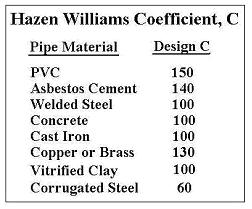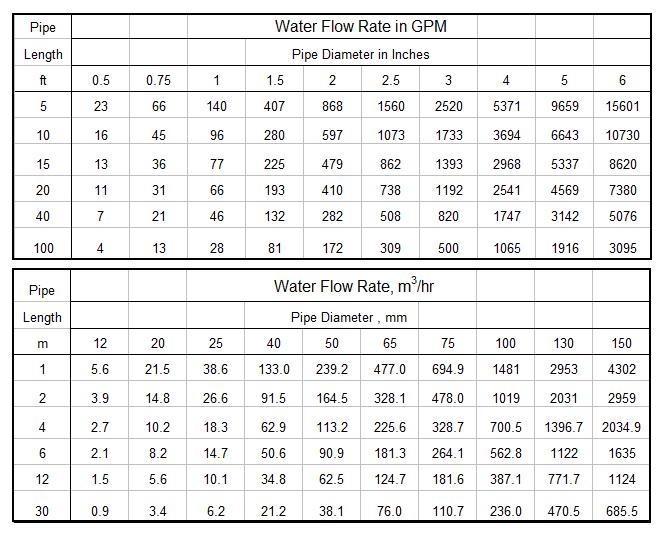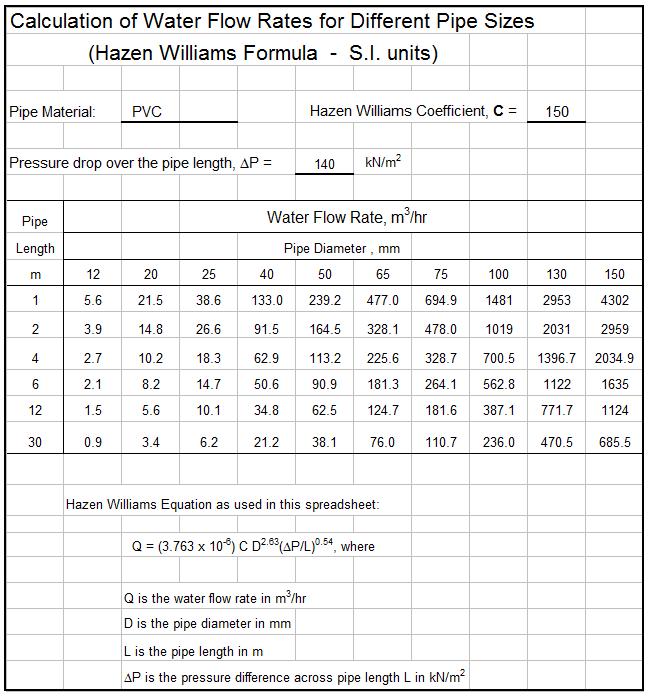Where to Find a Spreadsheet for Turbulent and Laminar Flow in Pipes
To obtain a spreadsheet for Turbulent and Laminar flow in pipes, click here to visit our spreadsheet store. Intended for use in calculating pipe flow rate, frictional head loss, or required pipe diameter, you can buy a convenient spreadsheet for turbulent or laminar flow in pipes calculations for a very reasonable price. This spreadsheet makes calculations with the Hagen Poiseuille equation for laminar flow and with the Moody friction factor and the Darcy Weisbach equation for turbulent flow. It is available in either U.S. or S.I. units. Read on for information about a spreadsheet for turbulent and laminar flow in pipes calculations.
The Reynolds Number Criterion for Turbulent and Laminar Flow in Pipes
For flow in pipes, the Reynolds number is: Re = DVρ/μ, for any consistent set of units for pipe diameter, D, flow velocity, V, fluid density, ρ, and fluid viscosity, μ. Pipe flow will be turbulent if the Reynolds number is greater than 4000 and will be laminar if the Reynolds number for the flow is less than 2300. If the Reynolds number is between 2300 and 4000, the flow may be either laminar or turbulent, depending on factors such as the type of pipe entrance and the roughness of the pipe wall.
Equations for Turbulent and Laminar Flow in Pipes
For discussion of the Moody friction factor and its use in the Darcy Weisbach equation for turbulent pipe flow calculations, see the post, “Pipe Flow-Friction Factor Calculations with Excel Spreadsheets.” For laminar flow in pipes, the Hagen Poiseuille equation is as follows: ΔP = 8μLQ/(Πr4 ), where ΔP is the frictional pressure drop in lb/ft2, μ is the fluid viscosity in lb/ft-sec, L is the length of the pipe in ft, Q is the flow rate through the pipe in cfs, and r is the pipe radius in ft. Note that the Hagen Poiseulle equation is identical with the Darcy Weisbach equation for pipe flow with the Moody friction factor equal to 64/Re.
Example Spreadsheet for Turbulent and Laminar Flow in Pipes Calculations
A spreadsheet for Turbulent and Laminar Flow in Pipes calculations is partially shown in the image below. This Excel spreadsheet can be used to calculate the frictional pressure drop and head loss for known pipe flow rate, diameter and length along with fluid density and viscosity and the pipe wall roughness. It can also be used to calculate pipe flow rate or minimum required pipe diameter if the other parameters are known. This Excel spreadsheet, as well as others for pipe flow calculations, is available in either U.S. or S.I. units for a very reasonable price in our spreadsheet store.
References
1. Munson, B. R., Young, D. F., & Okiishi, T. H., Fundamentals of Fluid Mechanics, 4th Ed., New York: John Wiley and Sons, Inc, 2002.
2. Darcy Weisbach equation history – http://biosystems.okstate.edu/darcy/DarcyWeisbach/Darcy-WeisbachHistory.htm
3. Bengtson, Harlan H. Pipe Flow Calculations with the Darcy Weisbach Equation, An online blog article.
4. Bengtson, H.H., Pipe Flow/Friction Factor Calculations with Excel, an online continuing education course for Professional Engineers.
5. Bengtson, Harlan, “Advantages of Spreadsheets for Pipe Flow/Friction Factor Calculations“, An Amazon Kindle e-book.




